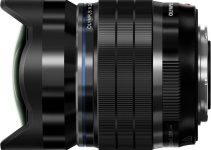DaVinci Resolve 14 is known in the film industry as the incredibly powerful color-grading platform at no cost to the user unless, of course, you are willing to pay for the additional features of DaVinci Resolve Studio. While the software does have a lot going for it under-the-hood with its ever-evolving, vast feature set, as any other piece of professional software, it does require a bit of a learning curve.
Still, there are many tutorials out there on the Internet that guide users, from novice to professional, on how to use the application as the following one obviously isn’t an exception to that rule. In the video, Dave Andrade of The Post Color Blog shows off how to quickly set the white balance in DaVinci Resolve 14, by utilizing a relatively simple process in a few easy steps.
First and foremost, make sure you haven’t made any color adjustments before you use this technique as you need to work with the untouched raw footage. Otherwise, you will not be properly balancing the colors in your shot, defeating the purpose of this process.
That said, the first step in setting the white balance in DaVinci Resolve 14 is choosing a black point. Inside of the color wheels panel, click on the target icon next to the Lift color wheel label. Go to your video clip and click on the point in your footage you want to set to black.
Typically, this should be the darkest area of your image. What this will do is adjust any part of the image to the black point you have selected. As you set the point, you will notice that Resolve instantly adds contrast to your image.
Next, set the white point by clicking the target icon next to the Gamma color wheel label. Find the brightest part of your shot and click on it. Resolve will then adjust the image to balance the shot according to your set white point.
If you find that the shot appears to have too much contrast, Dave recommends that you adjust the contrast, rather than the Gain or Lift separately. This is to ensure that your highlights and shadows are balanced and that neither setting is too overwhelming.
Alternatively, you could use the Auto White Balance tool located at the bottom of the Color Wheels panel, by clicking on it and leaving Resolve to do its job afterward. Either way, it’s paramount to use the RGB Parade and Waveform scopes as these will give you a lot more accurate measurements that will help you to get your images balanced correctly instead of evaluating colors only by eye.
[source: The Post Color Blog]
Disclaimer: As an Amazon Associate partner and participant in B&H and Adorama Affiliate programmes, we earn a small comission from each purchase made through the affiliate links listed above at no additional cost to you.





What does the first part have to do with white balance ? It’s just for contrast.